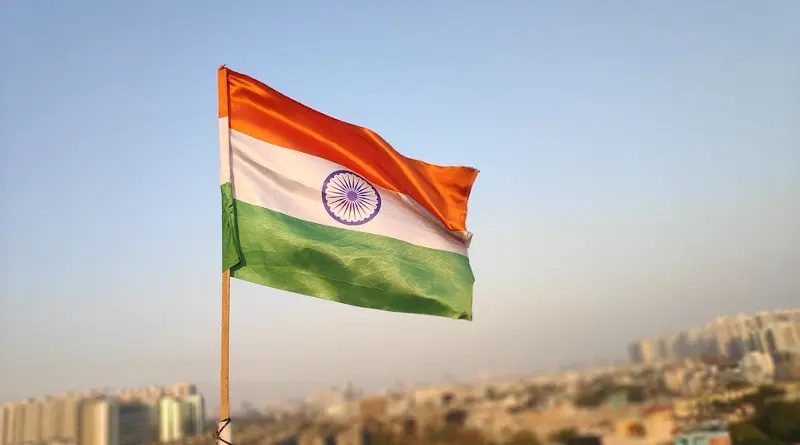Indian Air Force: Wither Offensive Air Support In 1962? – Analysis
The 1962 War with China saw the proud record of the Indian Armed Forces which had participated in the First and the Second World Wars sullied at the hands of the Chinese People’s Liberation Army (PLA). Amongst the many lessons learnt from the War was the non use of offensive air power by the Indian side. This has remained one of the enigmas of 1962 which has been debated across the board. On the 80th Anniversary of the Indian Air Force (IAF) controversy over India abdicating the use of offensive air power in 1962 India China War has again cropped up.
The IAF Chief, Air Chief Marshal Norman Browne in the traditional pre IAF Day media conference remarked that the IAF was not allowed to be used in an offensive role and was restricted to only the transport role. “If offensive airpower had been used in 1962, the outcome would have been very different…it would have changed the course of the war,” said Air Chief Marshal N A K Browne. He indicated that there would be no such limitations in a future war scenario. Browne stated, “These are open and glaring lessons [of non use of the IAF in 1962 operations] we should have imbibed,” he added. “I can assure you there will be no such limitation. The IAF will play a leading role in not just against that or any other sector but anywhere whenever the need arises.”
The Indian Air Force official web page highlights the restricted transport role in 1962 thus, “During the period 20 October to 20 November, pressure on the Service’s transport and helicopter units were intense, troops and supplies having to be flown to the support of the border posts virtually around the clock and at extreme altitudes. The helicopters had to constantly run the gauntlet of Chinese small arms and anti-aircraft fire, while operating on the tricky helipads in the mountains. Many notable feats were performed by the IAF during this conflict, including the operation of C-119Gs from airstrips 17,000 ft (5180m) above sea level in the Karakoram Himalayas, and the air-lifting by An-12Bs of two troops of AMX-13 light tanks to Chushul, in Ladakh, where the small airstrip was 15,000 ft (4570m) above sea level”.
Analysts as Group Captain (in 2003) R. Sukumaran of the Indian Air Force writing in the July 2003 issue of Strategic Analysis, a Journal published by the Institute for Defence Studies and Analyses, a government funded think tank in New Delhi cite mainly three reasons for the same. An over assessment of potential of the PLA Air Force by the Intelligence Bureau (IB) led the political leadership to play safe and avoid retaliation which would have exposed Indian populated centres in the plains to strikes by the Chinese aircraft. The US Ambassador Mr John Kenneth Galbraith was reported to have prevailed on the political leadership not to use the Air Force to prevent escalation while finally it is said that the Air Force itself was hesitant due to difficulties in providing close air support to troops in the jungle terrain in NEFA without ground to air communications.
What ever it be hindsight reveals that this decision possibly could be one of the key factors which led to the debacle of sorts. In 1962, PLA Air Force (PLAAF) did not have the capability to operate from airfields in Tibet, nor could it have undertaken operations from the Chinese Mainland. That the IB did not take any inputs from the IAF was very obvious for use of offensive air support by the Indian side would have greatly assisted overcoming the asymmetry in terms of fire power that existed on the ground. For instance the 7 Infantry Brigade which disintegrated in the battle had only two 75 mm artillery pieces to support it. While the IAF may have had some hesitation in providing close support it could have carried out interdiction of Chinese forces exposed in the build up at various stages on the Tibetan Plateau.
Indian Army planners including Lt General SPP Thorat GOC in C Eastern Command in 1960 and Maj. Gen. D. K. Palit, the Director, Military Operations (DMO) had very clearly outlined that offensive air support was a feasible option. But the Army leadership was unable to convince the political hierarchy and even the IAF of the necessity for offensive air support.
Today while the IAF chief is confident that the situation has changed and no such restriction will be binding, the PLAAF has considerably enhanced potential. Thus the threat of launching air operations on city centers in India may be real. IAF on the other hand may have no counter value targets in Tibet.
However on the whole in many ways 1962 operations could also be seen as a turning point of sorts for the IAF as the IAF web site states that an, “ambitious expansion to a 45-squadron force which was sanctioned by the Government in October 1962, this calling for the raising of IAF personnel strength to some 100,000 by the early seventies”. The combat squadron strength of the IAF has however never reached the figure of 45, today it remains at 34 squadrons.


Wither? Oh yes, the IAF withered away. Rather offensively, I guess.